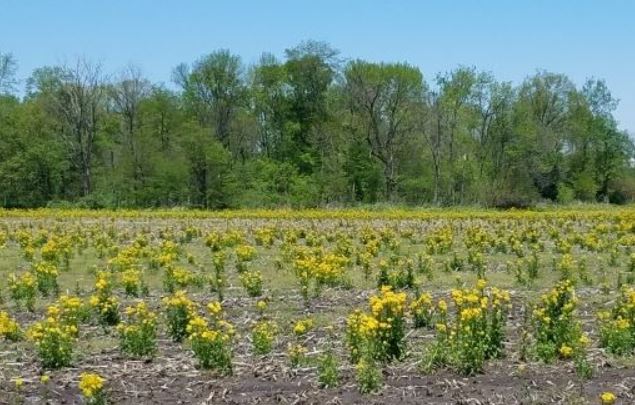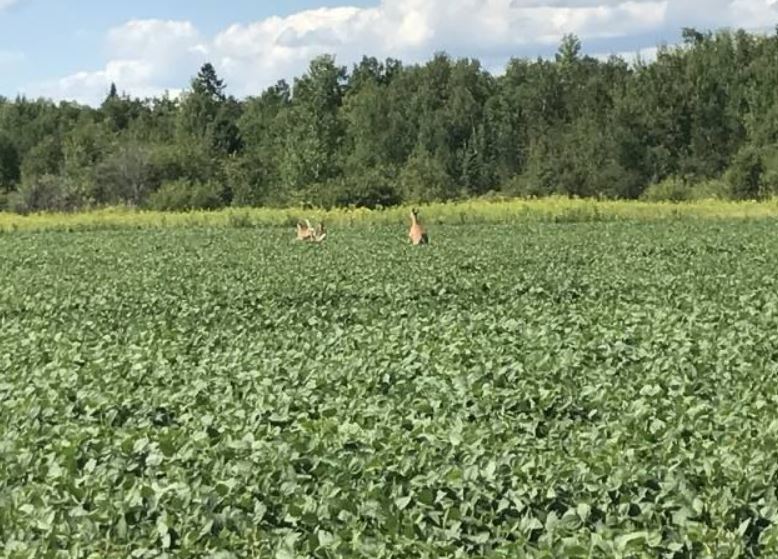Tips to Reduce Deer Crop Damage on Your Farm
Farmers are still one of the rare kinds of people who truly live off the land. For example, if a crop doesn’t do well, due to a storm or disease or drought, their salary and livelihood is directly impacted (to some extent). Unfortunately, there’s another cause of crop failure that doesn’t get nearly as much attention – wildlife damage to crops. Hungry herbivores like deer are known to prefer browsing in soybean and corn fields, not to mention many other kinds of agricultural crops, vegetable gardens, and fruit trees. So how can you (the farmer) reduce deer crop damage on your farm?
Options to Reduce Deer Crop Damage
There are a couple options open to you for deer eating crops, which are discussed below. Read through them and see which ones you should try if you haven’t already done so. Also realize that it may take some time and effort for these methods to truly work on your farm. But when you consider how extensive the crop damage caused by deer can be and the financial ripple effects of those actions, it is definitely worth trying them out.
Go Deer Hunting
The first way to fix the problem of deer destroying crops should be an obvious one. If you have too many deer on your property that persistently damage your crops, it’s possible your local deer population is too high and some may need to be removed. If very few people hunt in your area, that is likely one of the biggest deer overpopulation causes in your area. So the question of how to keep deer from eating soybeans on your farm is answered by simply hunting them yourself.
Either you, your family, or close friends could all hunt on the property with the intent of removing several deer. By hunting mature does, especially, you can drastically reduce the number of fawns that will call your property home in the future, which also reduces the number of mouths to feed. This is a great way to reduce deer crop damage quickly, although you do need to stay on top of the effort each year or it will simply reoccur. Even if you don’t like venison, you can often donate the meat to local food shelters or programs. If you don’t like to hunt or don’t have time to hunt, this just may not work for you. But keep reading below for a potentially better alternative.
Fencing and Repellents
Admittedly, this is fairly impractical for most large row crop farms simply due to the sheer amount of fence and repellent product you would have to install and maintain. Additionally, a deer-proof fence must be tall enough to exclude deer that can jump quite high, and it is very expensive on large acreages. Further, you also have to maintain it in order for it to work. That means you would need to patrol your fence line regularly to ensure that there are no downed sections or gaps where the deer could slip through. Some wildlife agencies might provide a cost-share assistance for this kind of fencing project in the right situation, but don’t count on it. Most agencies view this as a last resort for special circumstances and very specific situations, and so it is not considered a great way to reduce deer crop damage.
Deer Depredation Permits
One potential issue with hunting is that it only covers a very narrow portion of the year, so can farmers shoot deer out of season? In many cases, yes. Granted, if you don’t hunt (as we mentioned above), then this discussion also probably doesn’t apply to you. But in certain locations and conditions, wildlife agencies may issue depredation permits for deer, sometimes also called a nuisance deer permit, under their crop damage laws. A deer depredation permit essentially grants landowners and authorized lessees the option of shooting deer outside of the traditional legal hunting season. However, wildlife agencies usually only issue these permits when other less lethal means of control have proven ineffective and there are still deer eating farmers crops.
Leasing Your Land
This option may have never crossed your mind when it comes to the issue of how to reduce deer crop damage, but it is a very good blend of the options above, particularly if you don’t hunt yourself. Farmland is in high demand by most hunters, simply because there are often so many deer around with lots of available food to produce large and healthy deer. By allowing someone to lease your land specifically for deer hunting, you can keep your property in your name, reduce the deer herd, improve your crop production, and make a side income from the lease all at the same time – sounds like an easy choice, right?
The important thing to remember with this option is that you can still call the shots. You can include a rule in your hunting lease agreement that the hunter who leases your land needs to shoot 2 or 3 does before taking a buck to help you meet your property’s deer reduction goals. Besides the hunter getting lots of venison for the freezer (or donating it as mentioned above), the removal of so many mouths to feed and the focus on doe harvest means that there is more room and nutrition for the remaining bucks who also have more time to grow. So over time, the bucks will likely get older and bigger in the process. It’s a win-win for the farmer and the hunter.
With a formal hunting lease agreement through Base Camp Leasing, you would also get amazing insurance in the event of an accident, and the zero liability helps cover both you and the hunter. Additionally, having another person who can patrol your farm’s borders helps protect it from trespassers. But probably the most attractive part of this is that you can earn a healthy side income for no additional work.
What’s the Winner?
As we mentioned above, the clear choice for most people is the last one – leasing your farmland for hunting. It allows you to reduce deer crop damage very efficiently while helping you make a nice side income at the same time.



Leave A Comment